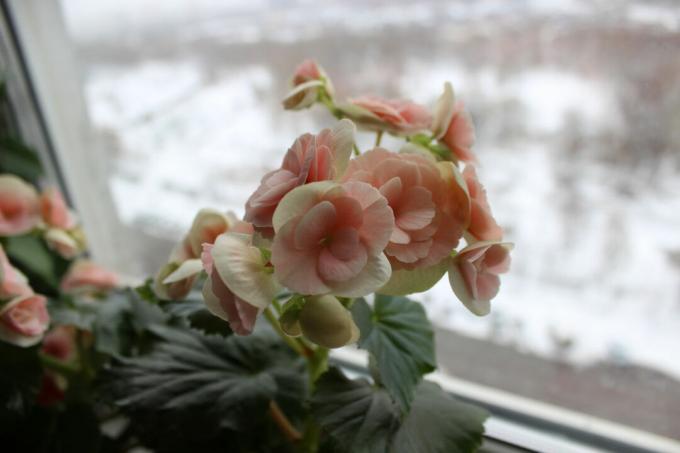Not every begonia is hardy and copes well with the cold season. We give tips on how to successfully overwinter begonias.

In winter, when it's freezing cold and your fingers and toes freeze off, nothing beats a cozy seat by the warm stove and a cup of hot cocoa. begonias (begonia) look very similar. Depending on the species, they do not necessarily need it warm and their need for drinks is also reduced noticeably over the winter, but it should definitely be frost-free to the taste of the exotic plants be. We have summarized for you below how you can successfully overwinter your begonias.
In this country, begonias are often only cultivated as annuals or even sold as annual plants. However, that is a pity, because the plants are by no means annual in their homeland. The only problem in Central Europe is the cold winter, which most begonias cannot tolerate. But this can be easily remedied if you give your begonias a place in a frost-free place over the winter.
When does the begonia get too cold?
Most begonias are not used to the low temperatures in their homeland. Plants don't like low temperatures that much, but when the temperatures drop below 0 °C and the first frost sets in, then it's time for the substance. The plant tissue dies and this is often the end of the whole plant.
Successfully overwintering begonias
Begonia overwintering differs a bit from species to species. Begonias, which can also be planted outdoors, like it a little cooler over the winter. ice begonias (Begonia semperflorens) for example are extremely happy with a bright stairwell at around 16 °C. You can also cut the plants back in the fall and overwinter in a frost-free basement or garage with very little watering. From March, however, you should bring the pots out into the light and slowly start watering again.
The large group of tuberous begonias (begonia x tuberhybrida) overwinters similarly to dahlias. It forms underground tubers, into which it withdraws after the first frost. In autumn, cut back the above-ground parts of the plant to a few centimeters and dig up the tubers. You can now overwinter them in the dark at about 10 °C. So that the tubers do not dry out over the winter, you should put them in a cloth bag or something similar. It is also possible to overwinter them in almost dry soil. Watering is then not necessary and will only be necessary again when you can already see new shoots in spring. If you have overwintered the tubers, you can plant them directly in the garden again after the ice saints in May. The hollow in the tuber should definitely look upwards.
More to Planting Begonias can be found in our special article.

Overwinter begonias outside
Very few can go outside Begonia species are overwintered and these only to a limited extent. So that they actually sprout again in the following spring, they need a thick frost protection made of brushwood, leaves or mulch. And even then, hibernation is not guaranteed. Especially in regions with a harsh climate and low winter temperatures, so-called hardy begonias should be brought indoors after the first light frost.
Overwinter begonias indoors
The thermophilic Elatior begonias (begonia x hiemalis) are often kept as indoor plants all year round and therefore do not have to be overwintered. The same applies to other pure room begonias such as the trout begonia (Begonia maculata) or the eyelash begonia (Begonia bowerae).
Hardy Begonias
Really hardy begonias are not yet known. However, two species in particular are so titled: the Japanese slate (Begonia grandis) and Begonia panchtharensis. Both species come from mountainous regions in Asia, but are only conditionally hardy. More about hardy begonias Find out here in our special article on the subject.
Tips for wintering begonias:
- Outside and with frost protection, only a few frost-tolerant species can be overwintered
- Pure room begonias can easily be overwintered indoors
- Outdoor begonias should be brought indoors over the winter and overwintered indoors in a cool, frost-free place
- Bulbous begonias are cut back in the fall and overwintered in a dry, dark, and cool place - either as bare bulbs or in dry soil



